Welcome to the STEREO Learning Center
Image artifacts - Background subtraction - Effect of Mercury
Here we discuss an artifact that did not appear on the STEREO website, but
instead appeared on our sister website for the
SECCHI
instrument suite. On December 1, 2011, a bright rectangular shaped artifact
appeared to the right of Mercury, as shown in the image below
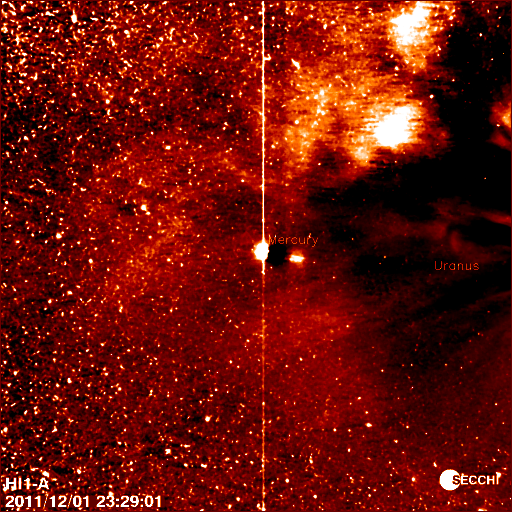 |
| HI1 image from STEREO Ahead showing a bright artifact to the
right of Mercury.
|
This artifact was caused by a combination of the way the instrumental
background is removed from the image, together with the time at which the image
was processed. To understand how this came about, one should first take a
close-up look at how the planet Mercury appears in the raw data. One such
image is shown below. Since Mercury is so bright, it causes vertical bright
and dark bars running across the entire height of the image. Also visible are
several background stars. However, what is important for the following
discussion is the horizontal line as pointed out by the arrow. This line is
caused by diffraction in the telescope optics.
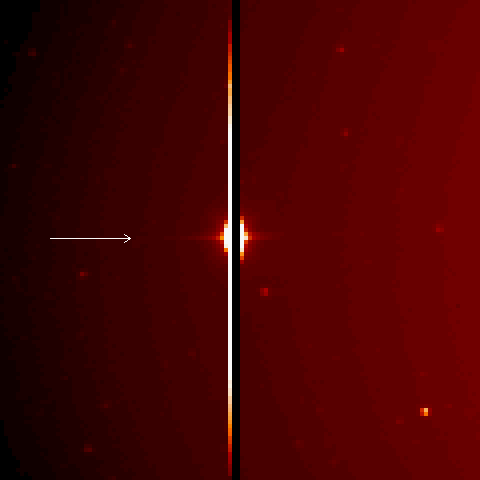 |
| Close-up of Mercury as it appears in one of the raw images
taken on December 1, 2011. The arrow points at a horizontal bar caused
by diffraction in the telescope optics.
|
The background image for a given day is derived by forming the median of all
the images taken that day. Because the stars are drifting from left to right
during the day, they do not appear in the daily median image. Similarly, the
planet Mercury is moving leftward and slightly upward during the day, and the
vertical bars do not appear either. However, Mercury is not moving fast enough
to allow the horizontal bars to the left and right of Mercury to be completely
removed, and these show up as two horizontal tracks in the background image, as
shown below. When this estimated background is removed from the data, too much
brightness is removed in the region around Mercury, showing up as a dark area
in the image. When the image is later reprocessed with more up-to-date
backgrounds, this artifact disappears.
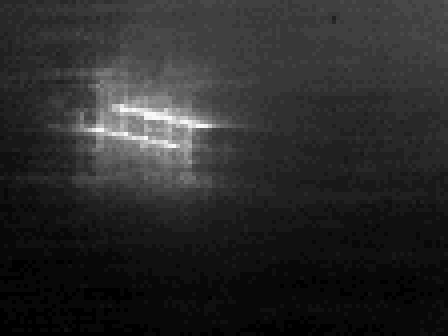 |
| Close-up of the region effected by the presence of Mercury in
the daily median background image for December 1, 2011.
|
The image below shows the same area in the median background image for the
previous day, November 30.
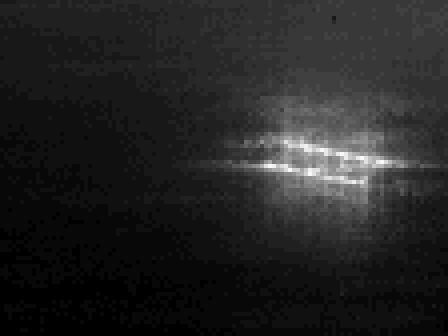 |
| Close-up of the region effected by the presence of Mercury in
the daily median background image for November 30, 2011.
|
When the background is removed from an image, what is really removed is the
interpolation of the two closest background images. Normally, this
interpolation is done using backgrounds before and after the image in question.
However, if the background for the next day doesn't exist yet, then the
interpolation is done using the previous two backgrounds. The image below
shows the result of interpolating the backgrounds from November 30 and December
1 to the time of the image at the top of the page. The region which was bright
on November 30, and at normal levels on December 1, is now too dark in the
interpolated image. When this background is removed from the data, the dark
region in the background appears as a bright region in the image.
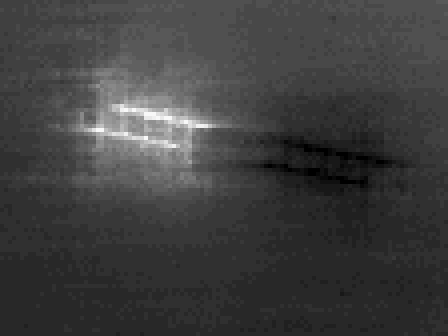 |
| Interpolation of previous two backgrounds to Dec. 1, 23:29
UT.
|
The processing of the images on the STEREO website is similar, except that the
backgrounds removed have been further processed using the data from several
weeks. This additional processing avoids the artifact seen in the image at the
top of the page. More of the background coronal streamers are visible in the
HI1 images on the STEREO website. On the other hand, the processing on the
SECCHI
website, by suppressing the streamers, shows the coronal mass ejections in
greater contrast.
Back to background subtraction page.